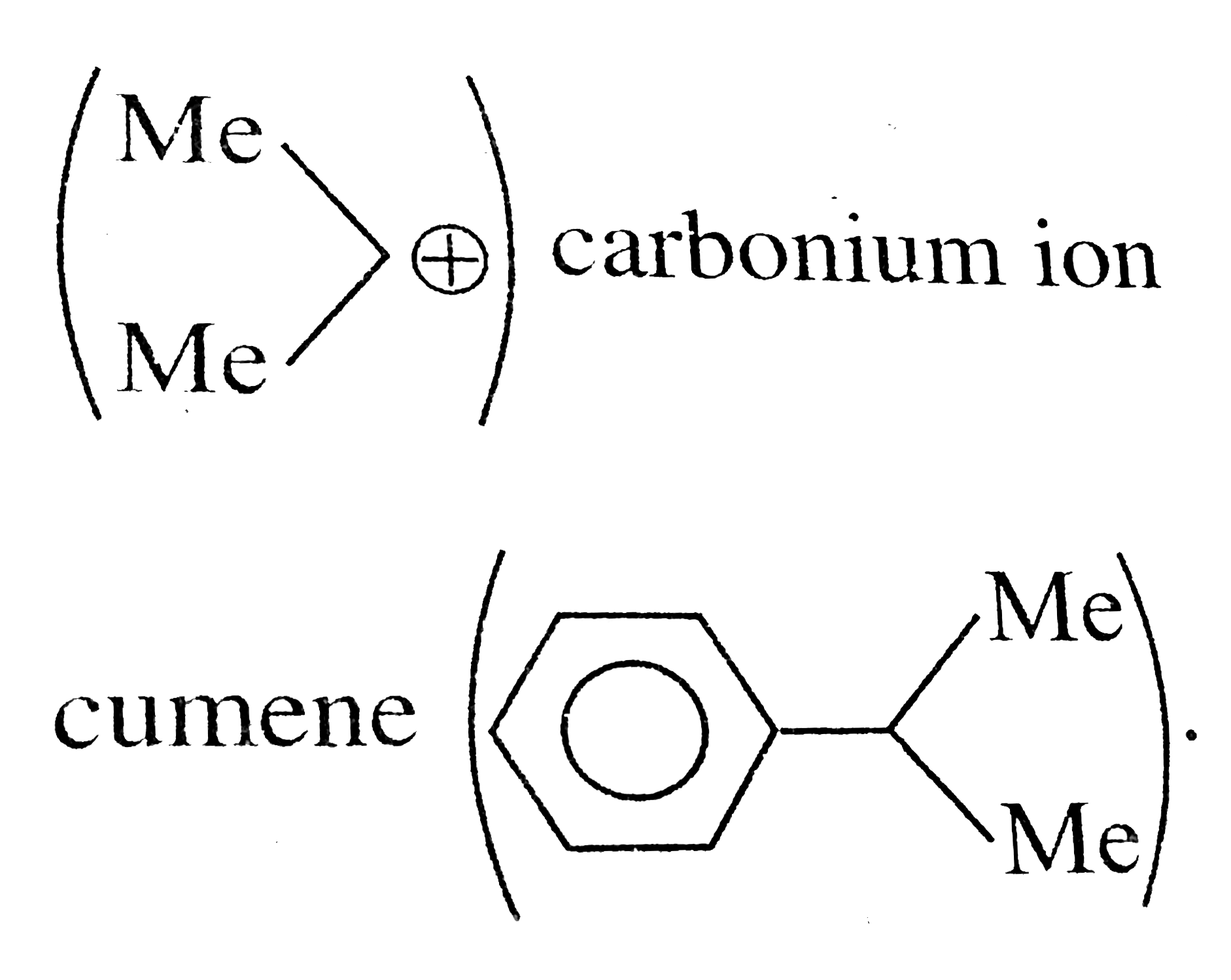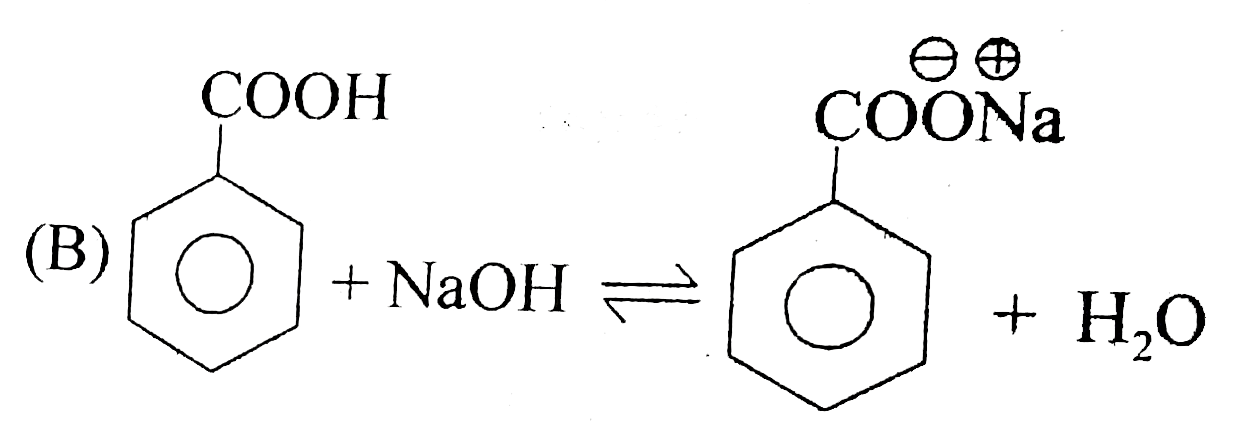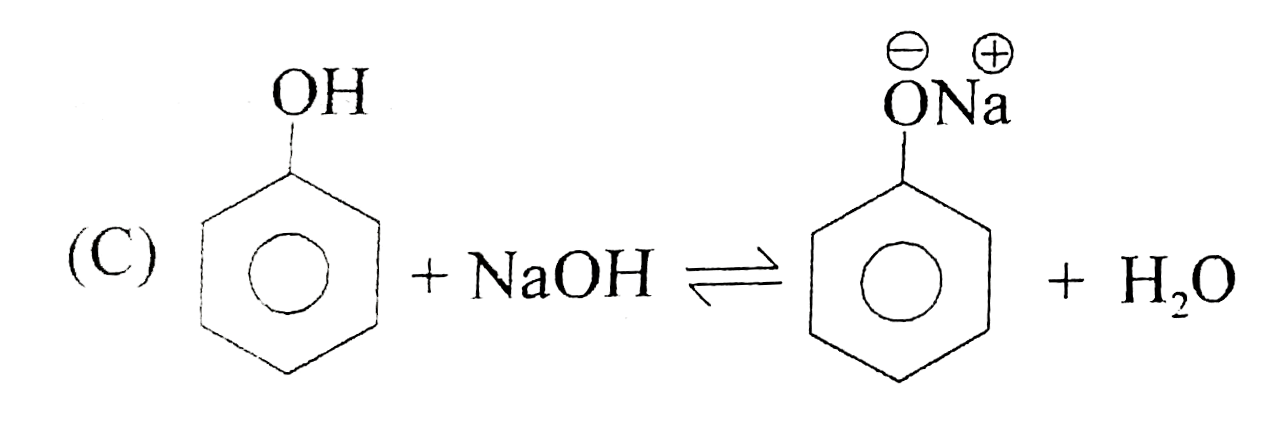Explore topic-wise InterviewSolutions in .
This section includes InterviewSolutions, each offering curated multiple-choice questions to sharpen your knowledge and support exam preparation. Choose a topic below to get started.
| 18901. |
The sublimation energy of l_(2)(s) is 57.3 kJ/mol and the enthalpy of fusion is 15.5 kJ/mol. The enthalpy of vaporisation of l_(2) is |
|
Answer» 41.8 kJ/mol Given, `I_(2)(s) to I_(2)(g),DeltaH_(1)=57.3kJ//mol`. ..(i) `I_(2)(s)toI_(2)(L),DeltaH_(2)=+15.5kJ//mol`. . . (ii) REQUIRED EQUATION `I_(2)(l)toI_(2)(g)`, Substract Eq. (ii) from eq. (i) `therefore I_(2)(l) to I_(2)(g),Deltah=57.3+(-15.5)=+41.8kJ//mol` |
|
| 18902. |
Yellow phsophorus reats alkali on boiling in an inert atmosphereliberates ………………… . |
|
Answer» PHOSPHOROUS acid |
|
| 18903. |
Which of the following reaction equilibrium is favoured in forward direction? |
|
Answer»
|
|
| 18904. |
Why are Cd^(2+) salts white ? |
| Answer» Solution :`Cd^(2+)`SALTS are white because it has COMPLETELY filled d ORBITALS `(d^(10))`. | |
| 18905. |
Whichcompound gives most unstable enol- |
|
Answer»
|
|
| 18906. |
Which of the following is not a target molecule for drug function in body ? |
|
Answer» Carbohydrates |
|
| 18907. |
Which type of isomerism is shown by 2,3-dichlorobutane? |
|
Answer» Diastero |
|
| 18908. |
Which solution has higher concentration, 1molar or 1 molal solution of the same solute? Give reason? |
|
Answer» Solution :In aqueous solution, 1M solution means 1 mole of the solute in 1000 cc of the solution whereas 1 m solution means 1 mle of the solute in 1000 g of water ( = 1000 cc of water). TOTAL volume of 1 m solution GT 1000 cc due to presence of extra 1 mole of the solute. Hence, numer of moles/cc in 1 m solution will be less than that in 1 M solution. In other words, 1 M is more concentrated than 1 m. In non-aqueous solution, 1 M can be GREATER than, less than or equal to 1 m, depending UPON the DENSITY of the solution. |
|
| 18909. |
Two mole of an ideal gas originally at a volume of 8 L at 1000 K , is allowed to expand adiabatically until final volume is 24 L . For the gas C_(v) = 1.5R . Calculate values of DeltaS for the process when: (i) The expansion takes place reversibly. (ii) The change in volume involves a free expansion. Sum of DeltaS of these two case is _________. (Used :e^(1.09) = 3and 1.09 xx 8.314=9) |
|
Answer» |
|
| 18910. |
The value of van der Waals' constant 'a' for gases O_2, N_2 , NH_3 and CH_4 re 1.360,1.390,4.170 and 2.253 litre^2 atm mol^(-2) respectively. The gas which can most easily be liquefied is : |
|
Answer» `O_2` |
|
| 18911. |
Which of the following is formed by the action of water on Na_(2)O_(2)? |
|
Answer» `H_(2)` |
|
| 18912. |
The specific conductance of a 0.20 M KCl solution at 298 K is 0.0248 S cm^(-1) . What will be its molar conductance? |
|
Answer» `1240 S cm^(2 ) mol^(-1)` |
|
| 18913. |
Using the unit conversion factors, express (i) 1.54 mm s^(-1) in pm mus^(-1) (ii) 2.66 g cm^(-3) in mum^(-3) |
|
Answer» (ii) `(2.66g)/(1cm^(3))xx(1mug)/(10^(-6)g)xx(100cm)/(1m)xx(100cm)/(1m)xx(100cm)/(1m)xx(10^(-6)m)/(1mum)xx(10^(-6)m)/(1mum)xx(10^(-6)m)/(1mum)=2.66xx10^(-6)MUG mum^(-3).` |
|
| 18914. |
Which of the following are the best methods for the preparation of cument (A) ? |
|
Answer»

|
|
| 18915. |
Which product of the following reaction is used to treat acid indigestion ? |
|
Answer» `Al_(4)C_(3) + H_(2)O rarr CH -= CH + Al(OH)_(3)` |
|
| 18916. |
The titration of oxalic acid in solution is possibile with KMnO_4 in presence of H_2SO_4 but the titration in presence of HCl does not give satisfactory result because. |
|
Answer» Chlorine of HCl is oxidised by oxalic ACID. |
|
| 18917. |
What happen when alcoholic KCN reacts with Benzaldehyde? (or) explain Benzoin condensation. |
Answer» Solution : BENZALDEHYDE reacts with alcoholic KCN to FORM BENZOIN. 
|
|
| 18918. |
Which equation represents an example of Friedel - Crafts reaction? |
|
Answer» `C_6H_6+C_2H_5Cl OVERSET(AlCl_3)rarrC_6H_5C_2H_5+HCl` |
|
| 18919. |
What amount of substance containing 60% NaCl, 37% KCl should be weighed out for analysis so that after the action of 25 ml of 0.1N AgNO_(3) solution, excess of Ag^(+)is back titrated with 5 ml of NH_(3)SCN solution? Given that 1 ml of NH_(4)SCN = 1.1 ml of AgNO_(3). [AgNO_(3)+NaSCN rarr AgSCN + NaNO_(3) ] |
|
Answer» |
|
| 18920. |
When pinacol is treated with dilute H_(2)SO_(4), a re-arangement reaction takes place which leads to the formation of a ketone. CH_(3)-underset(CH_(3))underset(|)overset(OH)overset(|)C-underset(CH_(3))underset(|)overset(OH)C-CH_(3)overset(H_(2)SO_(4))rarrCH_(3)-underset(CH_(3))underset(|)overset(O)overset(||)C-overset(CH_(3))overset(|)C-CH_(5) This reaction involves re-arrangement of carbocation Step 1: CH_(3)-underset(CH_(3))underset(|)overset(OH)overset(|)C-underset(CH_(3))overset(+)overset(OH_(2))overset(|)C-CH_(2)rarrCH_(3)-underset(CH_(3))underset(|)overset(OH)overset(|)C-underset(CH_(3))underset(|)overset(OH)overset(|)C-underset(CH_(3))underset(|)overset(+)C-CH_(3) Step 2: Carbocation rearrange by hydride, alkyl shift to get as stable as they can. Stability is the driving force for re-arrangement migration of bond may also oC Cur. Where by ring expansion and ring contraction takes place. The relief of strain can provide a powerful driving force for re-arrangement. What will be the product of following reaction |
|
Answer»
|
|
| 18921. |
When pinacol is treated with dilute H_(2)SO_(4), a re-arangement reaction takes place which leads to the formation of a ketone. CH_(3)-underset(CH_(3))underset(|)overset(OH)overset(|)C-underset(CH_(3))underset(|)overset(OH)C-CH_(3)overset(H_(2)SO_(4))rarrCH_(3)-underset(CH_(3))underset(|)overset(O)overset(||)C-overset(CH_(3))overset(|)C-CH_(5) This reaction involves re-arrangement of carbocation Step 1: CH_(3)-underset(CH_(3))underset(|)overset(OH)overset(|)C-underset(CH_(3))overset(+)overset(OH_(2))overset(|)C-CH_(2)rarrCH_(3)-underset(CH_(3))underset(|)overset(OH)overset(|)C-underset(CH_(3))underset(|)overset(OH)overset(|)C-underset(CH_(3))underset(|)overset(+)C-CH_(3) Step 2: Carbocation rearrange by hydride, alkyl shift to get as stable as they can. Stability is the driving force for re-arrangement migration of bond may also oC Cur. Where by ring expansion and ring contraction takes place. The relief of strain can provide a powerful driving force for re-arrangement. What will be the product of following reaction R is: |
|
Answer»
|
|
| 18922. |
When pinacol is treated with dilute H_(2)SO_(4), a re-arangement reaction takes place which leads to the formation of a ketone. CH_(3)-underset(CH_(3))underset(|)overset(OH)overset(|)C-underset(CH_(3))underset(|)overset(OH)C-CH_(3)overset(H_(2)SO_(4))rarrCH_(3)-underset(CH_(3))underset(|)overset(O)overset(||)C-overset(CH_(3))overset(|)C-CH_(5) This reaction involves re-arrangement of carbocation Step 1: CH_(3)-underset(CH_(3))underset(|)overset(OH)overset(|)C-underset(CH_(3))overset(+)overset(OH_(2))overset(|)C-CH_(2)rarrCH_(3)-underset(CH_(3))underset(|)overset(OH)overset(|)C-underset(CH_(3))underset(|)overset(OH)overset(|)C-underset(CH_(3))underset(|)overset(+)C-CH_(3) Step 2: Carbocation rearrange by hydride, alkyl shift to get as stable as they can. Stability is the driving force for re-arrangement migration of bond may also oC Cur. Where by ring expansion and ring contraction takes place. The relief of strain can provide a powerful driving force for re-arrangement. What will be the product of following reaction S is: |
|
Answer»
|
|
| 18923. |
When pinacol is treated with dilute H_(2)SO_(4), a re-arangement reaction takes place which leads to the formation of a ketone. CH_(3)-underset(CH_(3))underset(|)overset(OH)overset(|)C-underset(CH_(3))underset(|)overset(OH)C-CH_(3)overset(H_(2)SO_(4))rarrCH_(3)-underset(CH_(3))underset(|)overset(O)overset(||)C-overset(CH_(3))overset(|)C-CH_(5) This reaction involves re-arrangement of carbocation Step 1: CH_(3)-underset(CH_(3))underset(|)overset(OH)overset(|)C-underset(CH_(3))overset(+)overset(OH_(2))overset(|)C-CH_(2)rarrCH_(3)-underset(CH_(3))underset(|)overset(OH)overset(|)C-underset(CH_(3))underset(|)overset(OH)overset(|)C-underset(CH_(3))underset(|)overset(+)C-CH_(3) Step 2: Carbocation rearrange by hydride, alkyl shift to get as stable as they can. Stability is the driving force for re-arrangement migration of bond may also oC Cur. Where by ring expansion and ring contraction takes place. The relief of strain can provide a powerful driving force for re-arrangement. What will be the product of folowing reaction CH_(3)-underset(CH_(3))underset(|)overset(CH_(3))overset(|)C-CH_(2)-Broverset(NaOH)rarrP,P is: |
|
Answer» `CH_(3)-UNDERSET(CH_(3))underset(|)C=CH-CH_(3)` |
|
| 18924. |
When pinacol is treated with dilute H_(2)SO_(4), a re-arangement reaction takes place which leads to the formation of a ketone. CH_(3)-underset(CH_(3))underset(|)overset(OH)overset(|)C-underset(CH_(3))underset(|)overset(OH)C-CH_(3)overset(H_(2)SO_(4))rarrCH_(3)-underset(CH_(3))underset(|)overset(O)overset(||)C-overset(CH_(3))overset(|)C-CH_(5) This reaction involves re-arrangement of carbocation Step 1: CH_(3)-underset(CH_(3))underset(|)overset(OH)overset(|)C-underset(CH_(3))overset(+)overset(OH_(2))overset(|)C-CH_(2)rarrCH_(3)-underset(CH_(3))underset(|)overset(OH)overset(|)C-underset(CH_(3))underset(|)overset(OH)overset(|)C-underset(CH_(3))underset(|)overset(+)C-CH_(3) Step 2: Carbocation rearrange by hydride, alkyl shift to get as stable as they can. Stability is the driving force for re-arrangement migration of bond may also oC Cur. Where by ring expansion and ring contraction takes place. The relief of strain can provide a powerful driving force for re-arrangement. What will be the product of following reaction CH_(3)-underset(H)underset(|)overset(OH)overset(|)C-underset(H)underset(|)overset(OH)overset(|)CH_(3)overset(H_(2)SO_(4))rarrQ Q is: |
|
Answer» `CH_(3)-UNDERSET(O)underset(||)C-CH_(2)-CH_(3)` |
|
| 18925. |
Whichof thefollowingis thecorrectsequenceof stepinthehalogationofan alkane ? |
|
Answer» PROPAGATION , intiation , termination |
|
| 18926. |
Which of the following is not present in mineral |
|
Answer» `KNO_(3)` |
|
| 18927. |
what will be the change of entropy Delta_(r)S^(@)at 298 K for the reaction in which urea is formed from NH_(3) and CO_(2) ? 2NH_(3)(g)+ CO_(2)(g) to NH_(2)CONH_(2)(aq)+H_(2)O(l)[given ,the standard entropy ofNH_(2)CONH_(2)(aq) , CO_(2)(g), NH_(3)(g)and H_(2)O(l)are 174.0 , 213. 7, 192.3 and 69.9 JK^(-1)mol^(-1) respectively] |
|
Answer» ` 200 JK^(-1) mol ^(-1)` `S_(NH_(2)CONH_(2))^(@)+ S_(H_(2)O)^(@)-[2xxS_(NH_(3))^(@)+ S_(CO_(2))^(@)]` ` 174.0 + 69.9 -[2xx192.3+213.7]` `354.4 JK^(-1)mol^(-1)` |
|
| 18928. |
The volume strength of 1.5 " N " H_(2)O_(2) solution is |
|
Answer» `4.8` |
|
| 18929. |
When the following aldohexose exists in its D-configuration, the total number of stereoisomers in its pyranose form is : CHO - CH_(2) - CHOH - CHOH- CH_(2)OH |
Answer»  Thus, TOTAL number of STEREOISOMERS in pyranose FORM of D-configuration `=2^(3)=8` |
|
| 18930. |
Which of the following plots represents an ideal binary mixture? |
|
Answer» Plot of `"P"_("TOTAL")V//s" " 1//"X"_("B")` is linear (`"X"_("B")`= mole fraction of 'B' in liquid phase). |
|
| 18931. |
The standard electrode potentials (E_(M^(+)//M)^(@)) of four metals A, B, C and D are -1.2V, 0.6V, 0.85 V and -0.76V, respectively. The sequence of deposition of metals on applying potential is |
|
Answer» B GT D gt C gt A |
|
| 18932. |
The substance that has the lowest boililng point is: |
| Answer» Answer :D | |
| 18933. |
Which of the following stoichiometric laws suggests that different elements combine with each other by their equivalent weights ? |
|
Answer» LAW of definite proportion |
|
| 18934. |
ZSM-5 is used to convert : |
|
Answer» ALCOHOL to petrol |
|
| 18935. |
Which one of the following alkali metals has lowest melting point ? |
|
Answer» Sodium |
|
| 18936. |
What is the effect of increasing pH on K_2Cr_2O_7 solution? |
|
Answer» Solution :On INCREASING PH, orange colour of `K_2Cr_2O_7` solution changes to yellow DUE to the FOLLOWING reaction : `Cr_2O_7^(2-) + 2OH^(-) rarr 2CrO_(4)^(2-) + H_(2)O` |
|
| 18937. |
Write half cell reaction and E^o Value of(SHE) standard hydrogen electrode. |
| Answer» SOLUTION : Labelled diagram of SHE, label - pt foil,`H_2(G) ` (1 bar),`MH downarrowH_(AQ)^+ +e^- to 1/2H_2(g), E^o =0.00V.` | |
| 18938. |
What is the amount of work done when 0.5 mole off methane, CH_(4)(g), is subjected to combustion at 300 K? (Given, R=8.314JK^(-1)mol^(-1)) |
|
Answer» `-2494J` `CH_(4)+2O_(2)(G)toCO_(2)(g)+2H_(2)O(g)` `W=-pxxDeltaV=-nRT` `=-(-0.5)xx8.314xx300=+2494J` |
|
| 18939. |
Which of the following diagram correctly represent variation of pH of a solution of NH_(4)OH by addition of increasing quantity (volume in ml) of a known HCl solution? |
|
Answer»
|
|
| 18940. |
Which of the following has the lowest electron affinity ? |
|
Answer» K |
|
| 18941. |
Which acid can combine with tis own salt |
|
Answer» HI |
|
| 18942. |
Which of the following compounds can be used as antifreeze in automobile radiators? |
|
Answer» Methyl alcohol |
|
| 18943. |
What is ionic conductivity ? It is dependent on which bases ? |
|
Answer» Solution :* Definition: When electrolytes are dissolved in water, they furnish their own IONS in the solution hence its conductivity also increases. The conductance of electricity by ions present in the SOLUTIONS is called electrolytic or ionic conductance. Water has very low conductivity `3.5xx10^(-5)" S "m^(-1)`. * Ionic conductivity depends on : (i) the nature of the electrolyte added (ii) size of the ions produced and their SOLVATION (iii) the nature of the solvent and its viscosity (iv) concentration of the electrolyte (v) temperature : it increases with the increase of temperature. * Passage of direct current (DC) though ionic solution over a prolonged PERIOD can lead to change in its composition due to electrochemical reactions. |
|
| 18944. |
Titanium can be obtained in a state of high purity by |
| Answer» Solution :Van Arkel method | |
| 18945. |
Write IUPAC name of the following |
|
Answer» |
|
| 18946. |
Which one of the following is used as an insulator and making conveyor belts? |
| Answer» Solution :neoprene | |
| 18947. |
Which one of the following has a potential more than zero |
|
Answer» `Pt,(1)/(2)H_(2)(1atm)|HCl(1M)` |
|
| 18948. |
The size of the trivalent cation in the lanthanoid series decreases steadily as the atomic number increases. What is this known as ? |
| Answer» SOLUTION :LANTHANOID CONTRACTION. | |
| 18949. |
Which one is a synthetic polymer? |
|
Answer» Starch |
|











_S01_411_O01.png)
_S01_411_O02.png)
_S01_409_O01.png)
_S01_409_O02.png)
_S01_410_O01.png)
_S01_410_O02.png)



